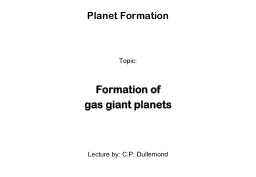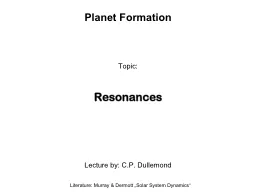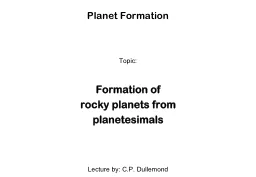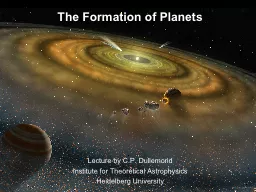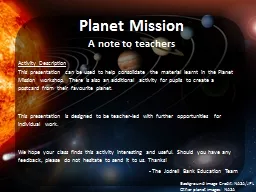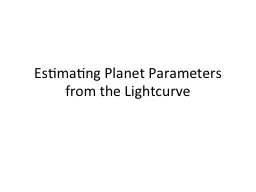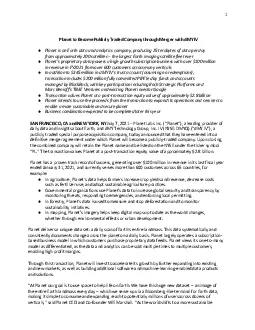PPT-Planet Formation
Author : phoebe-click | Published Date : 2015-11-09
Topic Formation of gas giant planets Lecture by CP Dullemond Two main theories Gravitational instability of the gas disk Core accretion scenario Giant Planet Formation
Presentation Embed Code
Download Presentation
Download Presentation The PPT/PDF document "Planet Formation" is the property of its rightful owner. Permission is granted to download and print the materials on this website for personal, non-commercial use only, and to display it on your personal computer provided you do not modify the materials and that you retain all copyright notices contained in the materials. By downloading content from our website, you accept the terms of this agreement.
Planet Formation: Transcript
Download Rules Of Document
"Planet Formation"The content belongs to its owner. You may download and print it for personal use, without modification, and keep all copyright notices. By downloading, you agree to these terms.
Related Documents

